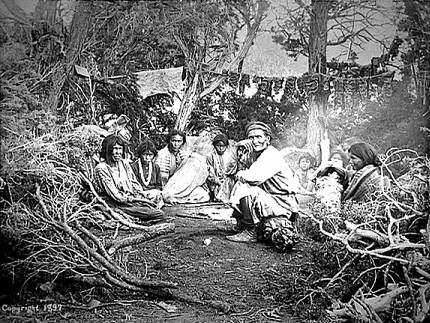

Few inhabitants of the Southwest would hesitate to put the Apache and Navajo among the native inhabitants, and we know the Apache played a major role in the historic events of the northern Chihuahuan Desert. Yet archaeological evidence indicates that these people were late-comers to the Southwest. Judging from their Athapaskan language, their earlier homelands were in interior Alaska and Canada. When or why they left, and their pathway southward, is lost in the mists of time, but lack of indications of earlier occurrence suggests that they arrived in the Southwest only shortly before 1500 and the subsequent arrival of the Spanish.
Over the years, alliances and hostilities formed and dissolved between
the Athapaskan speakers and those inhabitants that had arrived in earlier times, but
much of the warrior reputation of the Apache was forged in conflict with the Spanish
and Anglo invasions of what the Apache considered, and indeed was, now their
homeland.

Contributor: Arthur H. Harris, Laboratory for Environmental Biology, Centennial Museum, University of Texas at El Paso.
Desert Diary is a joint production of the Centennial Museum and KTEP National Public Radio at the University of Texas at El Paso.

Apache camp, late 1800s. Wittick photograph, Centennial Museum collection.
Cordell, L. 1984. Archaeology of the Southwest. 2nd Ed., Academic
Press, Inc., San Diego, 522 pp. ![]()